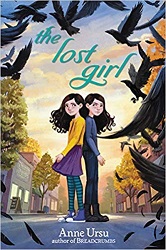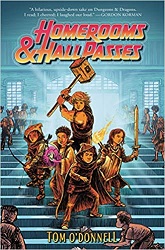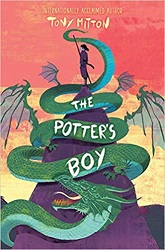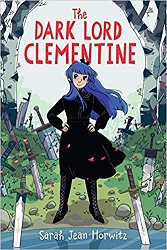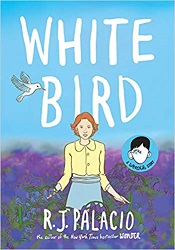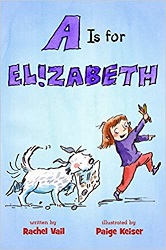 Cog
Cog
by Greg van Eekhout
Harper, 2019. 196 pages.
Starred Review
Review written October 20, 2019, from a library book
2019 Sonderbooks Stand-out: #2 in Children’s Fiction
2019 Cybils Award Finalist
This book is utterly delightful. It’s true that I’ve got a strong prejudice against books that claim robots have emotion or that assign basically magical abilities to robots, so I did have a tiny bit of trouble with suspension of disbelief. But I loved the characters so much, and they were so quirky and creative, I didn’t really care.
Here’s how Cog introduces himself:
My name is Cog. Cog is short for “cognitive development.” Cognitive development is the process of learning how to think and understand.
In appearance, I am a twelve-year-old boy of average height and weight. This means I’m fifty-eight inches tall and weigh about ninety pounds and seven ounces. In actuality, I am seven months old.
Now I will tell you some facts I have learned about platypuses.
Cog tells us about his home and his bedroom and about Gina, who lives with him and makes repairs and adjustments when he needs them.
Gina is a scientist for uniMIND. She has brown eyes like my visual sensors and brown skin like my synthetic dermal layer. Her hair is black and shiny, like the feathers of birds in the corvid family, which includes crows and ravens. When she smiles, which is often, a small gap is evident between her two front teeth. My teeth, which are oral mastication plates, have no gap, but I enjoy practicing smiling with Gina.
Cog is programmed to learn, to increase his cognitive development. As the book begins, Gina takes him to Giganto Food Super Mart to learn about shopping. She gives him a list and asks him to get the items unsupervised.
Cheese is the first item. Cog discovers many kinds of cheese that he hadn’t known existed before. He fills the cart with them. When he gets back to Gina, she tells him that for a first attempt he did a very good job.
“But we actually don’t need all this cheese,” she continues. “Nor do we need seven dozen apples or eight different kinds of orange juice or twelve different varieties of dish soap. So let’s start putting most of this back.”
I learn that unshopping takes longer than shopping.
As we return items to shelves, Gina explains to me where my judgment was faulty and led me astray.
“Is my judgment the result of a bug?” I ask her. “Can you fix it?”
“No,” she says, hanging seven bags of shredded cheese back on their hooks. “It’s just something you have to learn. It’s like my old professor used to tell me: ‘Good judgment comes from experience, but experience comes from bad judgment.’ That means we learn by making mistakes.”
I process this for a while.
“How long did it take you to learn good judgment?”
“Oh, I’m still learning it, buddy. I’m learning it all the time.”
Since Cog’s mission is to learn, he makes a resolution. The next morning, he sneaks out of the house.
Leaving the house without Gina’s permission is a mistake. this pleases me, because a mistake is an act of bad judgment, and I expect my act of bad judgment to increase my cognitive development.
Unfortunately, out in the yard, Cog sees a Chihuahua about to be hit by a truck. He saves the Chihuahua – and gets hit by the truck.
When Cog wakes up, he is in bed and hooked up to data ports beneath his flipped-up fingernails, but something is not right. He is not in his bedroom at home, and Gina is not there.
It turns out that since she allowed Cog to be hit by a truck, she’s been taken off the project. Cog is at UniMIND headquarters and told it’s his new home.
When he finds out they want to open up his brain and take out the X-Module (whatever that is), Cog resolves to run away and find Gina.
And so we end up with a delightful road trip story. Cog travels with four other robots – ADA, an Advanced Destructive Apparatus who looks like a twelve-year-old girl, a Trashbot that asks everyone if they have waste, a robotic dog, and a talking Car. The Car asks if he will accept liability before it agrees to set out with them.
The adventure is wild – okay, perhaps quite a bit unlikely – but oh, so much fun. Each one of the robots has a distinct and consistent personality, and I love Cog’s voice narrating the whole thing. In fact, I will end this review with some words of wisdom from Cog:
Since leaving the UniMIND campus, I have had several bad experiences, and one thing I have learned is that friends and sandwiches make even the worst of situations more tolerable.
writingandsnacks.com
harpercollinschildrens.com
Buy from Amazon.com
Find this review on Sonderbooks at: www.sonderbooks.com/Childrens_Fiction/cog.html
Disclosure: I am an Amazon Affiliate, and will earn a small percentage if you order a book on Amazon after clicking through from my site.
Source: This review is based on a library book from Fairfax County Public Library.
Disclaimer: I am a professional librarian, but I maintain my website and blogs on my own time. The views expressed are solely my own, and in no way represent the official views of my employer or of any committee or group of which I am part.
What did you think of this book?

